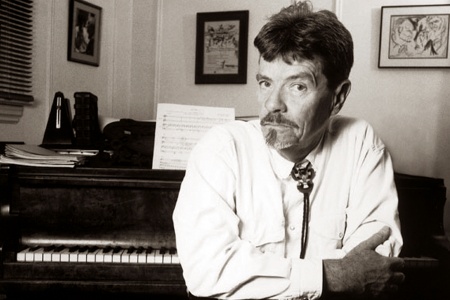For Ann (rising)
James Tenney’s For Ann (rising) is a “trompe l’oreille” piece of music composed to fool the ear. Edgar Varèse is said to have used the term referring to its visual equivalent, the familiar French term “trompe l’oeil”, that is, an optical illusion. The subtle ingenuity of James Tenney’s piece lies in the very paradox that produces the illusion: though For Ann (rising) sounds like a forever-ascending carousel ride, its inherent structure makes it perhaps the most static of all compositions. Tenney creates the auditory illusion by layering a number of slow glissandi on top of each other, with each of these glissandi rising from below to above the range of human hearing, always entering a minor sixth below their predecessors and fading in at regular intervals. Extremely static though this description may seem, what we hear nevertheless sounds as if the carousel was not only spinning but also spiralling continuously upwards.
Explaining and even anticipating the point of the composition does not spoil the suspense, for it is characteristic of Tenney that the surprise in his music is not which story is told, but how it is told. What his music and its narrative is always about is hearing itself. No composed development, no exposition, no processing or deconstruction of the material. “I am a confirmed phenomenologist,” Tenney said.
Which also means: compositional tours de force and ideologising conclusions are farm from his mind. In his music and also in his theoretical works he attempts to create an instrument of listening or a vocabulary for describing music without having to justify exceptions to or deviations from a fictitious norm. It is not about bold statements and achievements, but about the precision of being and observing. Not wanting to express something with sounds, but letting the sounds themselves evoke a story is the art in this particular case. Auditory perception and its physiological and psychological boundaries are the story told in this paradox Tenneyesque carousel ride.

